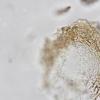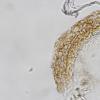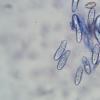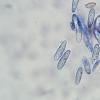
15-11-2025 23:22
Mario FilippaHello,this is what I think to be Hymenoscyphus mac

14-11-2025 16:26
 Marian Jagers
Marian Jagers
Hello everyone, On dead wood of Cytisus scoparius

15-11-2025 20:25
 Riet van Oosten
Riet van Oosten
Hello, Found by Laurens van der Linde, Nov. 2025

14-11-2025 18:31
 Lothar Krieglsteiner
Lothar Krieglsteiner
Hello,can somebody provide me with a file of:Rothe

12-11-2025 09:25
 Viktorie Halasu
Viktorie Halasu
Hello, I need help with a pale terrestric Pseudom

11-11-2025 20:16
Bohan JiaHi, lastly I have found these tiny yellow decayin

09-11-2025 13:20
Hello.A tiny ascomycete, appearing as erupting gra
Hydropisphaera sp. on wood
Thorben Hülsewig,
07-01-2023 22:54
last year (22.10.22) i found on a branch this presumed Hydropisphaera.
My first idea was H. arenula, but this species has striate spores and my finding has warts.
I couldn't find hairs on the perithecia.
Any idea what this could be ?
best regards,
Thorben
Alain GARDIENNET,
08-01-2023 08:13
Re : Hydropisphaera sp. on wood
Hi Thorben ,
Your request can only make us think back to Christian who had spent some time studying Hydropisphaera. No doubt he would have had an opinion on your quest. He left us exactly one year ago, you give us the opportunity to think of him.
I don't know if there are any mycologists today who study these Bionectriaceae. But there is no doubt that this collection deserves to be studied more closely. Knowing its anamorph would be useful (and molecular data, in a second time). In the meantime you can make a complete description, and in particular clarify some important points in this genus: are the ascomata completely glabrous, smooth ? or do they have hairs ? I advise you to show spore's ornamentation in the lactic cotton blue. A vertical section through lateral ascomata wall is helpful... (tha attached paper is a good model)
It's not excluded that this Hydropisphaera could be unpublished. The closest species is perhaps H. rufofusca, a species known from Indonesia. I don't know this one ,of course, and yours seems to be different.
Best wishes,
Your request can only make us think back to Christian who had spent some time studying Hydropisphaera. No doubt he would have had an opinion on your quest. He left us exactly one year ago, you give us the opportunity to think of him.
I don't know if there are any mycologists today who study these Bionectriaceae. But there is no doubt that this collection deserves to be studied more closely. Knowing its anamorph would be useful (and molecular data, in a second time). In the meantime you can make a complete description, and in particular clarify some important points in this genus: are the ascomata completely glabrous, smooth ? or do they have hairs ? I advise you to show spore's ornamentation in the lactic cotton blue. A vertical section through lateral ascomata wall is helpful... (tha attached paper is a good model)
It's not excluded that this Hydropisphaera could be unpublished. The closest species is perhaps H. rufofusca, a species known from Indonesia. I don't know this one ,of course, and yours seems to be different.
Best wishes,
Alain
Alain GARDIENNET,
08-01-2023 08:20
Re : Hydropisphaera sp. on wood
Another comparison suggested : H. boothii. Seems to be different, too (cf setae).
Thorben Hülsewig,
09-01-2023 20:12
Re : Hydropisphaera sp. on wood
Hi Alain,
Every time I see some Nectriaceae-like mushrooms, I have to think of Christian.
He is undoubtedly missed, not only because of his expertise, but also as a helpful and friendly person.
Unfortunately, I was not allowed to meet him personally.
I have check the ascomata again and can't find any hairs.
In lactic cotton blue it's difficult to see any ornamentation, but there are some warts or spines.
You can see it good at the end of the spores.
But no matter what I do, I can't reproduce an ornament on the surface.
I hope my new pictures can help.
best regards,
Thorben
Every time I see some Nectriaceae-like mushrooms, I have to think of Christian.
He is undoubtedly missed, not only because of his expertise, but also as a helpful and friendly person.
Unfortunately, I was not allowed to meet him personally.
I have check the ascomata again and can't find any hairs.
In lactic cotton blue it's difficult to see any ornamentation, but there are some warts or spines.
You can see it good at the end of the spores.
But no matter what I do, I can't reproduce an ornament on the surface.
I hope my new pictures can help.
best regards,
Thorben
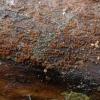
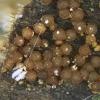
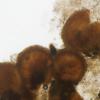
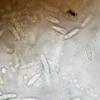
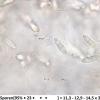
 Three-new-species-of-Hydropisphaera-AscomyceteOrg-12-02-39-46-1--0001.pdf
Three-new-species-of-Hydropisphaera-AscomyceteOrg-12-02-39-46-1--0001.pdf